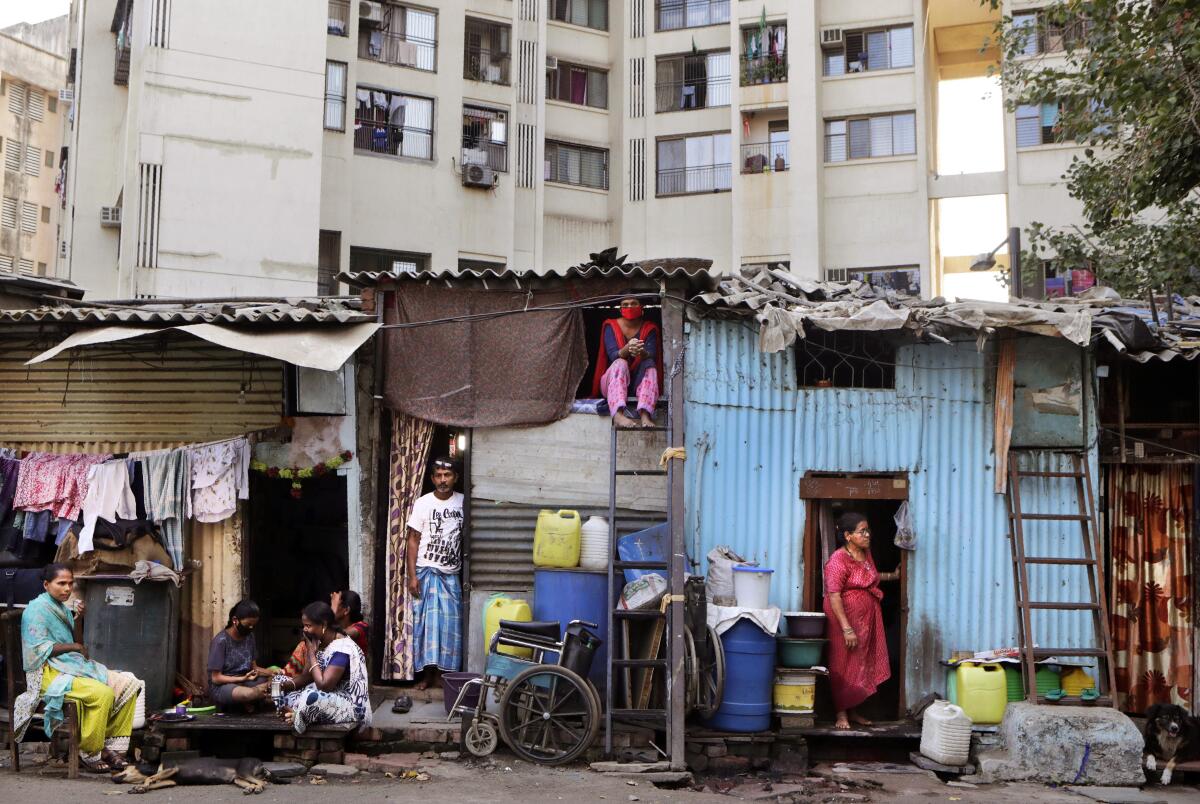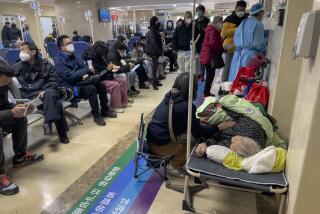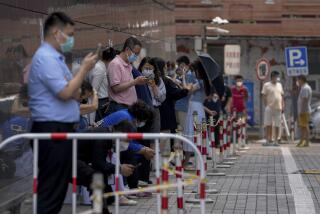Some countries report new coronavirus infection peaks, even as lockdowns ease

- Share via
While millions of people took advantage of easing coronavirus lockdowns to enjoy spring weather, some of the world’s most populous countries reported worrisome new peaks in infections Sunday, including India, which saw its biggest single-day jump yet.
Second in population only to China, India reported more than 2,600 new infections. In Russia, new cases exceeded 10,000 for the first time. The confirmed death toll in Britain climbed near that of Italy, a hot spot of Europe’s outbreak, even though the U.K. population is younger than Italy’s and Britain had more time to prepare before the pandemic hit.
The United States continues to see tens of thousands of new infections each day, with more than 1,400 new deaths reported Sunday.
Health experts warn that a second wave of infections could hit unless testing is expanded dramatically once the lockdowns are relaxed. But pressure to reopen keeps building after the weeks-long shutdown of businesses worldwide plunged the global economy into its deepest slump since the 1930s and wiped out millions of jobs.
China, which reported only two new cases Sunday, saw a surge in visitors to newly reopened tourist spots after domestic travel restrictions were loosened ahead of a five-day holiday that runs through Tuesday. Nearly 1.7 million people visited Beijing parks on the first two days of the holiday, and Shanghai’s main tourist spots welcomed more than 1 million visitors, according to Chinese media. Many spots limited daily visitors to 30% of capacity.
On the eve of Italy’s first steps toward easing restrictions, the Health Ministry reported 174 COVID-19 deaths in the 24-hour period ending Sunday evening — the lowest day-to-day number since the national lockdown began March 10. Parks and public gardens were set to reopen Monday.
In Spain, many ventured outside for the first time since the country’s lockdown began March 14, but social distancing rules remained in place. Masks are mandatory starting Monday on public transit.
In Britain, Prime Minister Boris Johnson is under pressure to reveal how the country will lift its lockdown. The restrictions are due to last through Thursday, but with hundreds of deaths still being reported daily — twice as many recently as Italy or Spain — it’s unclear how the country can safely loosen the restrictions.
The 55-year-old Johnson, who spent three nights in intensive care last month while being treated for COVID-19, told the Sun newspaper that he knew his doctors were preparing for the worst.
“It was a tough old moment, I won’t deny it,” he said. “They had a strategy to deal with a ‘death of Stalin’-type scenario” if he succumbed to the virus.
Another potentially troubling sign emerged in Afghanistan’s capital city of Kabul, where a third of the 500 people selected in random tests were positive for the virus.
Russia’s more than 10,000 new cases Sunday were nearly double the number reported a week ago. More than half of new cases were in Moscow, where concern is rising about whether the capital’s medical facilities will be overwhelmed.
Indian air force helicopters showered flower petals on hospitals in several cities to thank doctors, nurses and police at the forefront of the battle against the pandemic.
The country’s number of confirmed cases passed 40,000 as the population of 1.3 billion marked the 40th day of a nationwide lockdown. The official death toll neared 1,400.
Pope Francis called Sunday for international collaboration in the search for a vaccine and treatment for COVID-19 and invited faithful of all religions to spiritually unite in prayer, fasting and works of charity May 14.
The coronavirus has infected 3.5 million people and killed nearly 250,000 worldwide, including more than 67,000 dead in the United States, according to a count by Johns Hopkins University.
All the numbers are considered to be undercounts because of testing issues, the problems of counting deaths in a pandemic and deliberate concealment by some governments.
More to Read
Sign up for Essential California
The most important California stories and recommendations in your inbox every morning.
You may occasionally receive promotional content from the Los Angeles Times.










